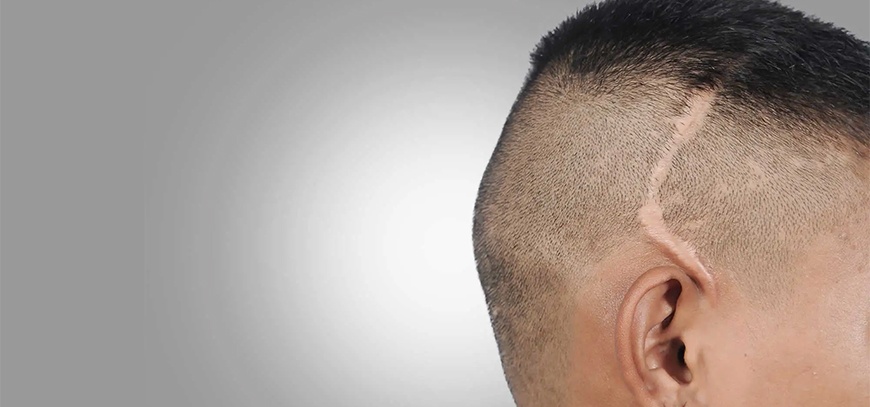Working Time
- Mon-Sat 10:00 – 19:00
Contact Info
-
+90 542 512 51 64
Ask the Experts
Scar Transplantation

Hair transplant surgery is a well-known treatment for those suffering from male or female pattern baldness but it also has another important purpose. Those who have suffered permanent injury or disfigurement, because of an accident, surgery, congenital birth defect or fire for example, can also benefit from advances in hair transplant technology.
Special attention and multiple procedures
Hair grafts will grow in scar tissue, so it is perfectly possible to have a hair transplant performed over a scar.
If the tissue is thickened or raised local steroid injections may help to flatten it, but once the scar is smooth the transplant can be performed as normal.
However, areas of scar tissue can have a reduced level of blood supply compared to normal areas of the scalp. This means that the grafts should not be placed too close together, otherwise growth can be poor.
Instead, the doctor will need to leave larger gaps than normal between grafts, and as these grow, new blood vessels will form in the area. The patient can then undergo further transplant procedures, adding extra grafts to achieve more density in these areas and a natural looking final result.
At My Imperial Care we have a successful record of performing hair transplants on patients with scar tissue, often resulting from previous procedures performed with older techniques.
The Procedure
When you receive a hair transplant to cover scars, our doctors usually work with quite small areas. They shave a small square in the donor area in the back of the head and extract grafts. These grafts then move to the area of scar tissue to be hidden. The hair transplant is then supplemented with a PRP treatment for best results. Sometimes the scar tissue may be so thick that PRP treatment is needed before the procedure to encourage blood supply to the area.
Different types of scar transplants:
- Hair transplants to hide the scars on the head.
- Hair transplants to conceal scars on the face.
- Hair transplants to hide scars over the eyebrows.
We are also visited by patients who want to correct scars from previous hair transplants using older and inferior techniques, which have created scars in the donor area. It is never possible to completely hide the scars by moving hair follicles to the scar tissue, but in almost all cases it is possible to significantly reduce the characteristically white scar.
30% of Hair Transplant patients that we see require scar repair for scars left after having a poor hair transplant treatment elsewhere or from a previous FUT strip procedure.
DHI and FUE hair transplants are a great way to help disguise previous hair restoration scars but it is a highly skilled technique which will require an in-depth examination of the scalp.
A hair transplant for scar repair can be affected by:
- The thickness of the scar
- Inflammatory conditions
- The blood supply to the scar
It is possible to transplant hair follicles into scar tissue however there are risks associated with this such as a reduced blood supply. Hair follicles need a good blood supply to survive. If the blood supply is limited the hair follicles will not survive.
A consultation with one of our online consultants is vital. You will be asked about your medical history. For example if you have an inflammatory disease then we would recommend that you do not have further hair restoration surgery until the disease has been inactive for at least 2 years. A flare up could result in the results of your surgery being compromised so keeping your condition under control is vital.
